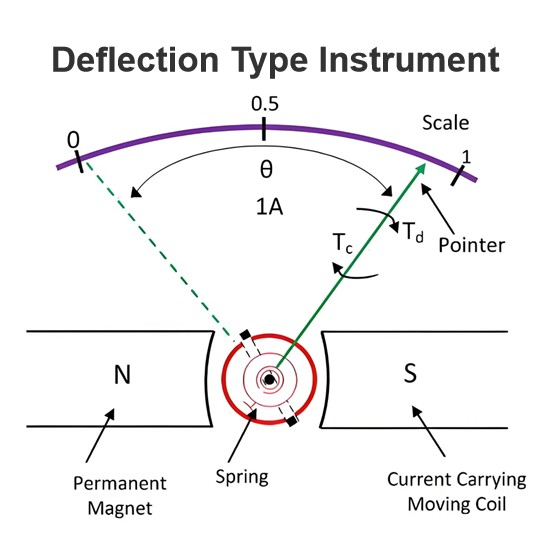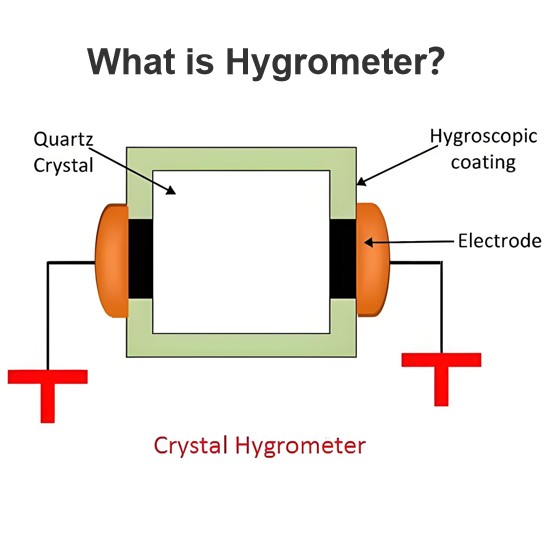Temperature Rise Test of Transformer
Temperature Rise Test Definition
A temperature rise test of a transformer checks if the temperature increase of its winding and oil meets specified limits.
Temperature Rise Test for Top Oil of Transformer
First, the LV winding of the transformer is short-circuited.
Then one thermometer is placed in a pocket in the transformer top cover. Other two thermometers are placed at the inlet and outlet of the cooler bank respectively.
The voltage of such value is applied to the HV winding that power input is equal to no load losses plus load losses corrected to a reference temperature of 75oC.
The total losses are measured by three wattmeters method.
During the test, hourly readings of top oil temperature are taken from the thermometer already placed in the pocket of the top cover.
Hourly readings of the thermometers placed at inlet and outlet of the cooler bank are also noted to calculate the mean temperature of the oil.
Ambient temperature is measured by means of a thermometer placed around the transformer at three or four points situated at a distance of 1 to 2 meter from and half-way up the cooling surface of the transformer.
Continue the temperature rise test for top oil until the temperature increase is less than 3°C in one hour. This steady value is the final temperature rise of the transformer oil.
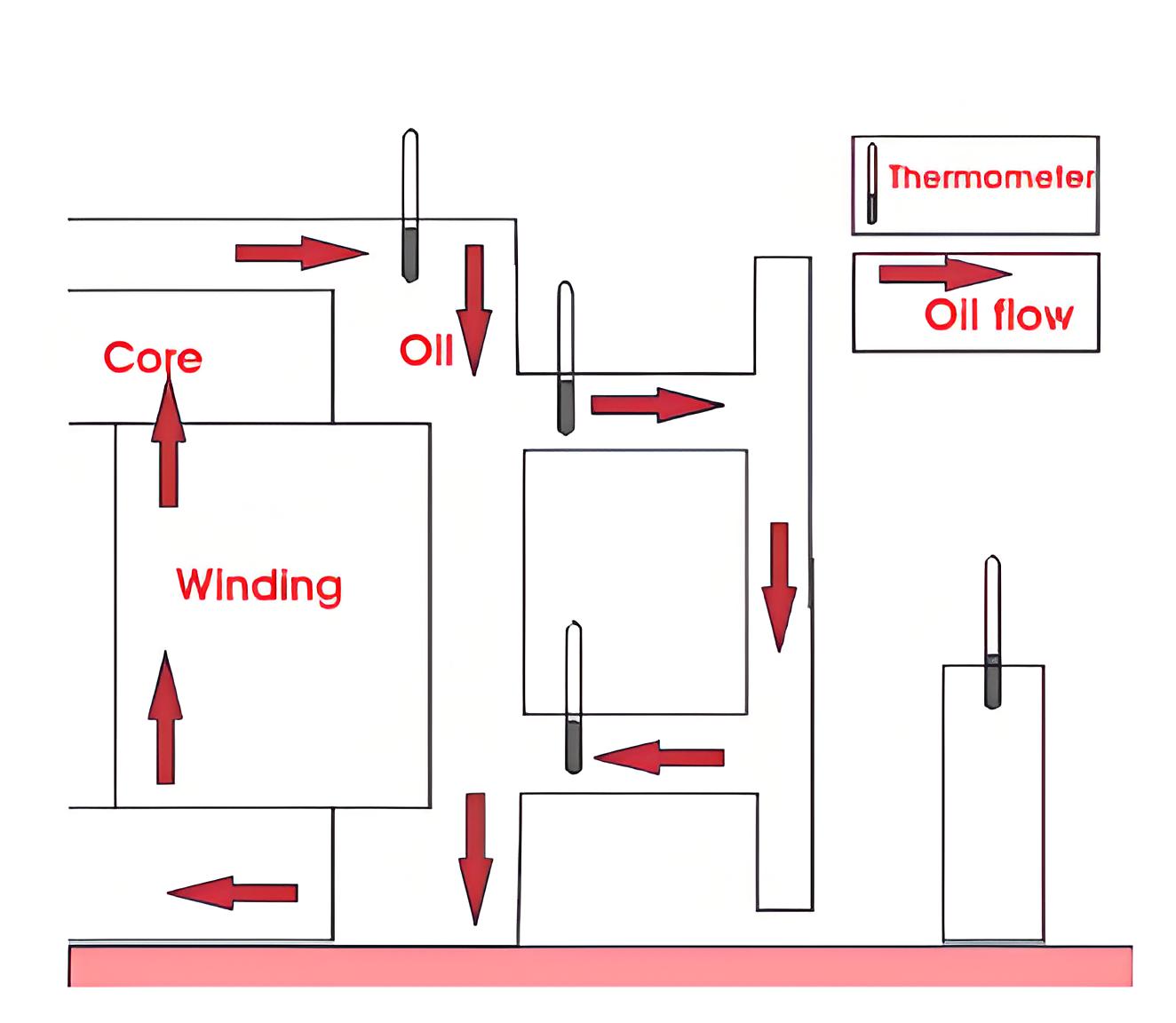
There is another method of determination of oil temperature. Here the test is allowed to be continued until the top oil temperature rise does not vary more than 1oC per hour for four consecutive hours. The loweest reading during this time is taken as the final value for the temperature rise of the oil.
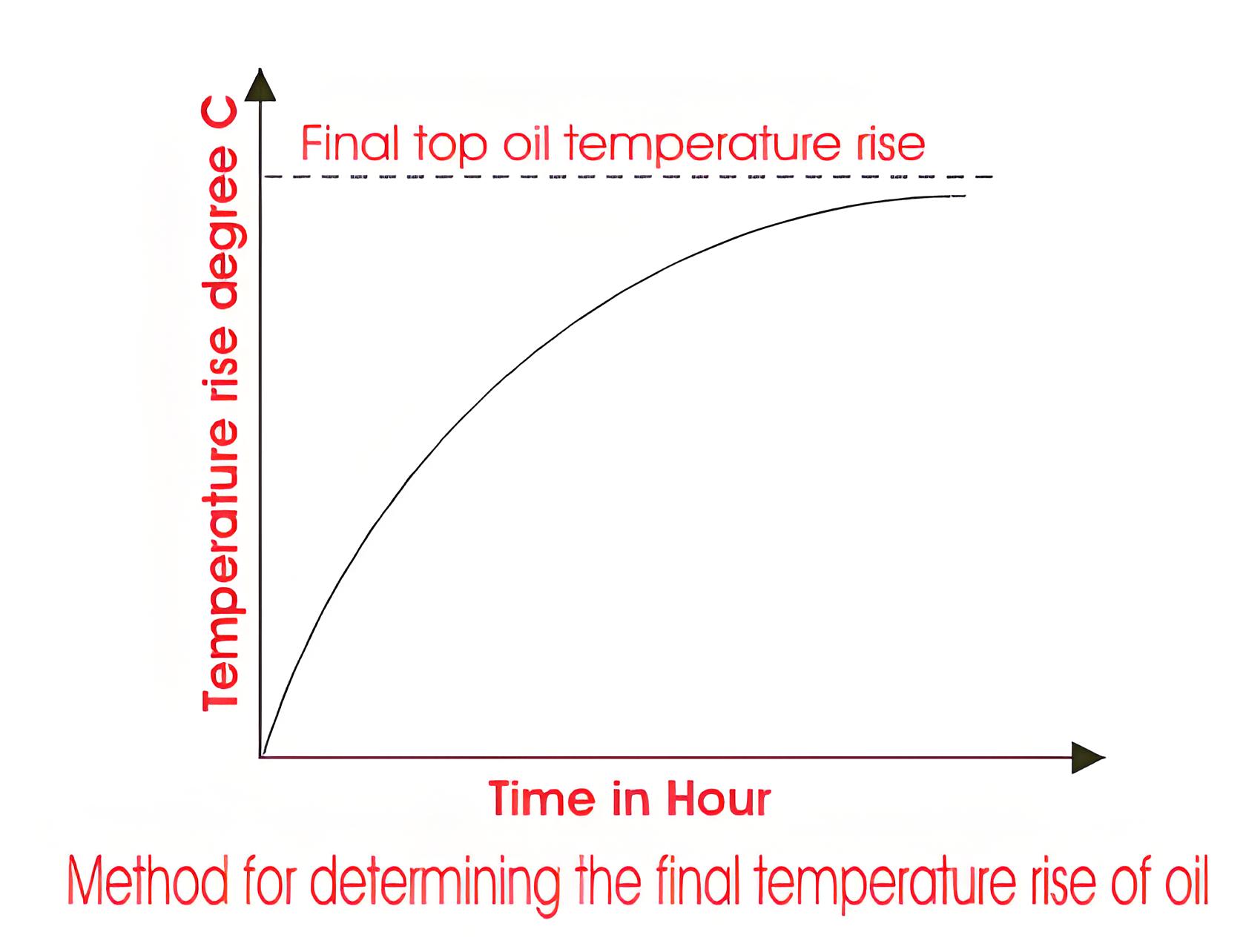
During the top oil temperature rise test, we short-circuit the LV winding and apply voltage to the HV winding. The supply voltage needed is much less than the rated voltage because core losses depend on voltage. Since core losses are minimal, we compensate by increasing the current to create additional copper loss. This ensures the actual temperature rise in the transformer oil.
Temperature rise limits of transformer when it is oil immersed, given in the table below
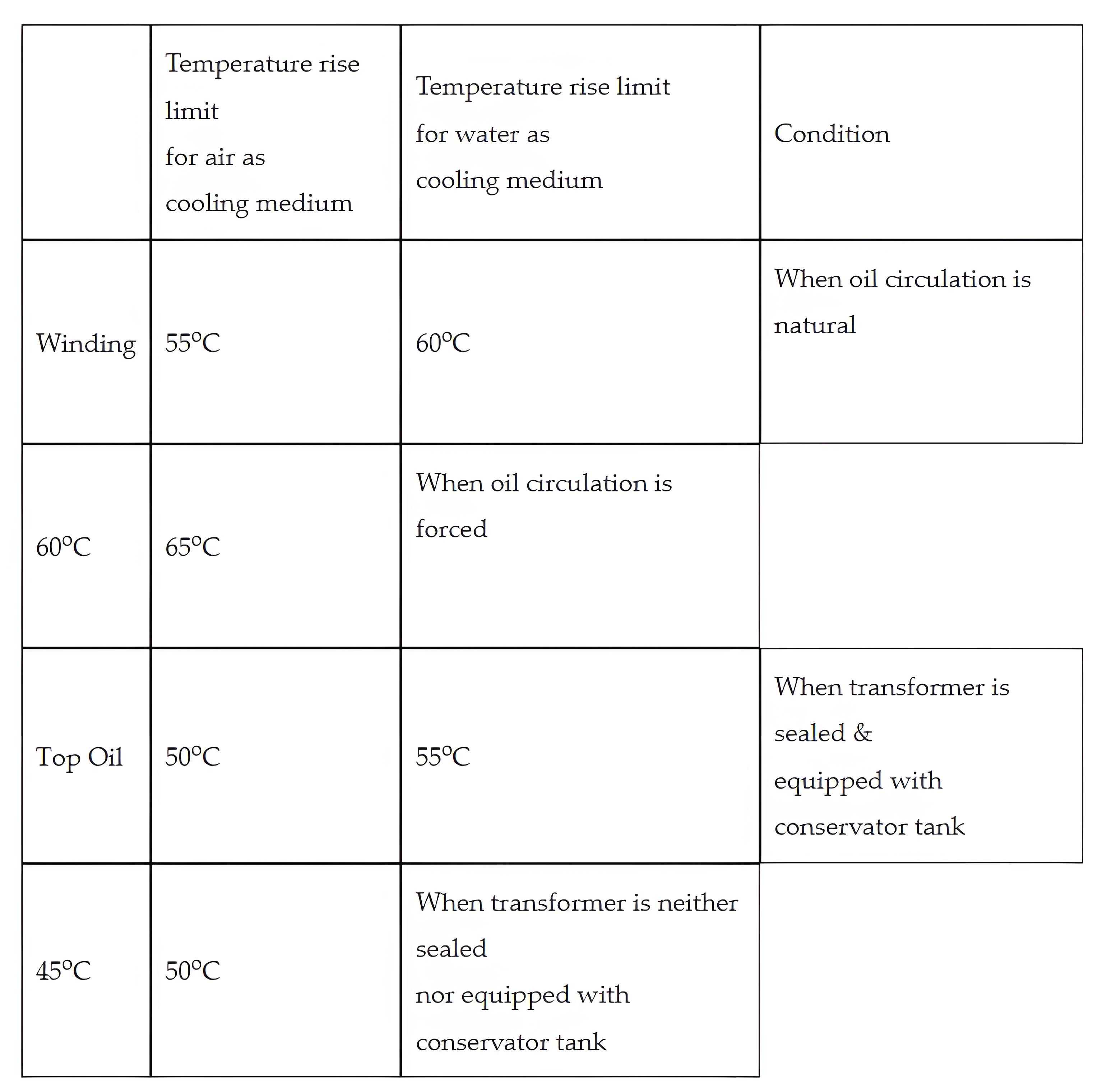
NB: These temperature rises limits mentioned in the above table are the temperature rise above the temperature of cooling medium. That means these are the difference between winding or oil temperature and temperature of cooling air or water.
Winding Temperature Rise Test on Transformer
After completion of temperature rise test for top oil of transformer the current is reduced to its rated value for transformer and is maintained for one hour.
After one hour the supply is switch off and short circuit and supply connection to the HV side and short circuit connection to the LV side are opened.
But, the fans and pumps are kept running (if any).
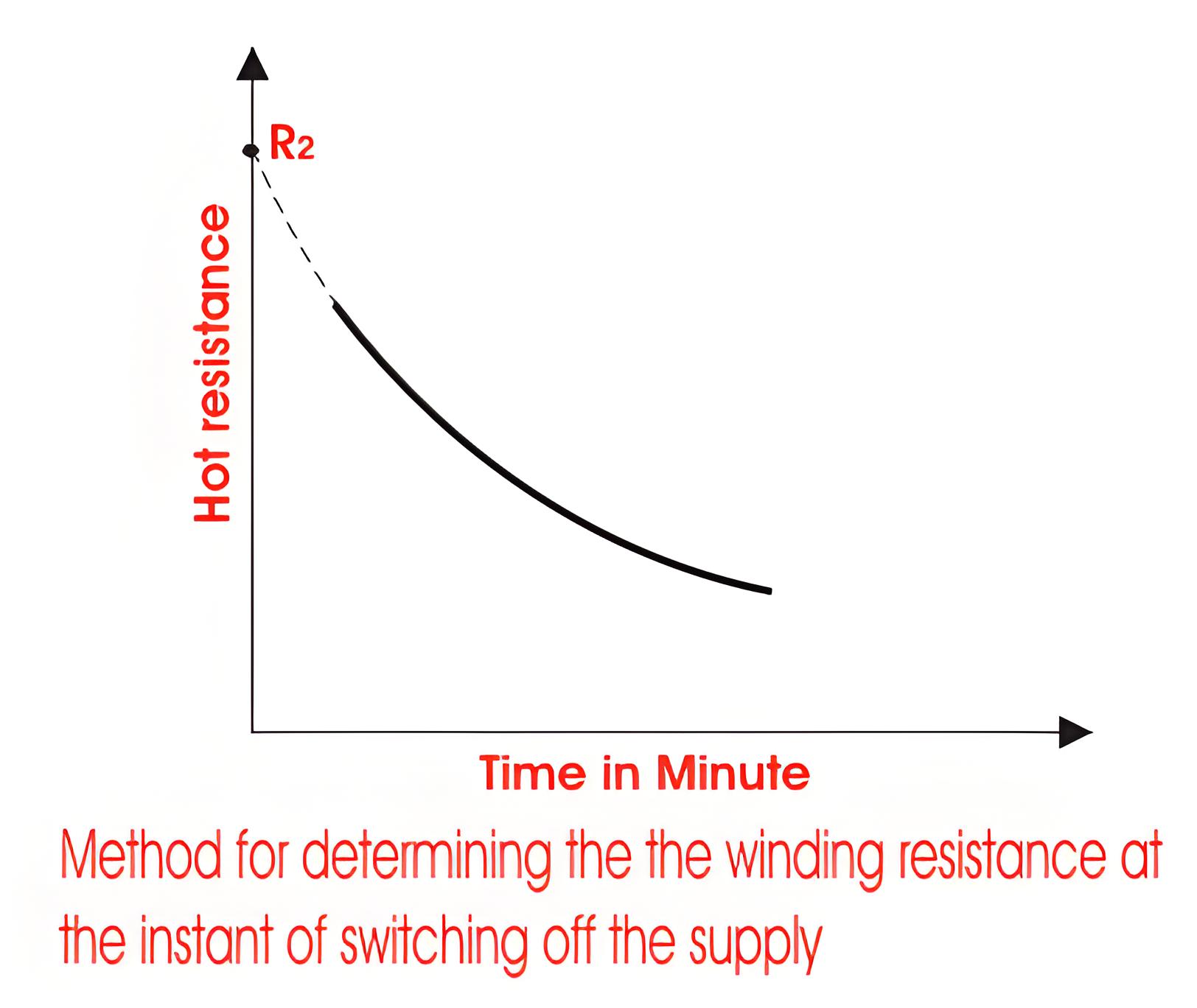
Then resistance of the windings are measured quickly.
But there is always a minimum 3 to 4 minutes time gap between first measurement of resistance and the instant of switching off the transformer, which can not be avoided.
Then the resistances are measured at the same 3 to 4 minutes time intervals over a period of 15 minutes.
Graph of hot resistance versus time is plotted, from which winding resistance (R2) at the instant of shut down can be extrapolated.
From this value, θ2, the winding temperature at the instant of shut down can be determined by the formula given below

Where, R 1 is the cold resistance of the winding at temperature t1.For determining winding temperature rise we have to apply the above discussed indirect method.
That means hot winding resistance is measured and determined first and then from that value we have to calculate the winding temperature rise, by applying resistance temperature relation formula. This is because unlike oil the winding of transformer is not accessible for external temperature measurement.
The Electricity Encyclopedia is dedicated to accelerating the dissemination and application of electricity knowledge and adding impetus to the development and innovation of the electricity industry.


